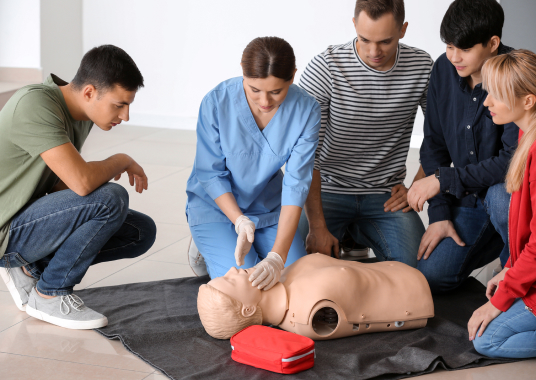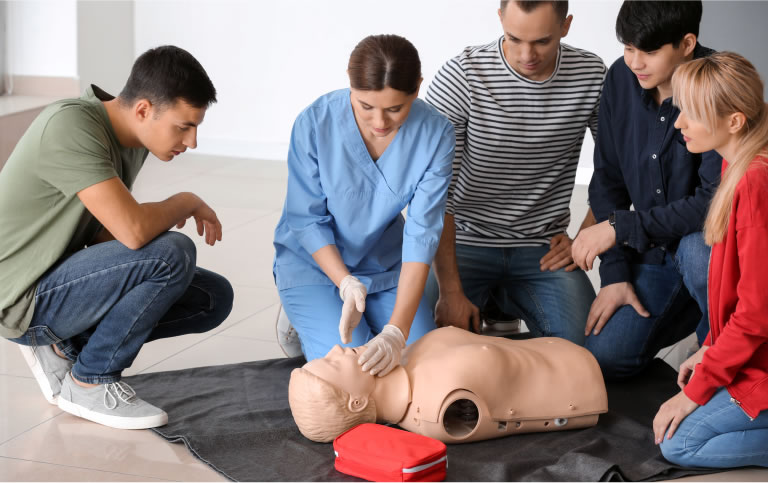CPR, First Aid, BLS, ACLS, PALS certifications.


Get certified in Adult, Child, and Infant CPR, First Aid, and Bloodborne Pathogens with our 100% online combo course. Complete it in just 2 hours and receive instant certification, unlimited quiz retakes, and mailed wallet cards—valid for 2 years for CPR/AED and First Aid, and 1 year for Bloodborne Pathogens.
Our online CPR/AED First Aid certification combo course includes Adult, Child and Infant CPR and First Aid training. The combo certification is valid for 2 years and includes a free mailed in wallet card. Led by OSHA certified instructors, our online CPR classes curriculum is advanced Read More and follows ECC guidelines to help you save lives. Read Less
| Chapters | CE Credits | Validity | Cost | Duration | ECC | Exam Attempts | Wallet Card |
|---|---|---|---|---|---|---|---|
| 24 | 6.0 | 2 Years | $36.95 | 2-3 Hrs | Compliant | Unlimited | Download/Print/Mail |
A choking emergency happens when something blocks the airway, making it hard or impossible to breathe. It’s a serious situation that requires fast and confident action. In this part of your CPR/AED, First Aid & Bloodborne Pathogens Combo Training, you’ll learn how to recognize and respond to choking in adults and children.
Choking is a medical emergency that occurs when a foreign object, like food or a small item, obstructs the airway and prevents air from reaching the lungs. A person who is choking typically cannot breathe, speak, or cough effectively.
Understanding the causes can help you prevent emergencies before they happen. Choking is often caused by:
Recognizing the signs early is key in any choking first aid response. Look for:
In your CPR Certification Online Training, the right response can make all the difference. Here’s what to do if someone is choking:
If the person becomes unconscious, begin CPR.
A choking emergency (considered to be a medical emergency) is when an obstruction (object or food) blocks the airway and prevents air from getting to the lungs. The person is not able to breathe normally or cough. This section covers adult and child choking emergencies.